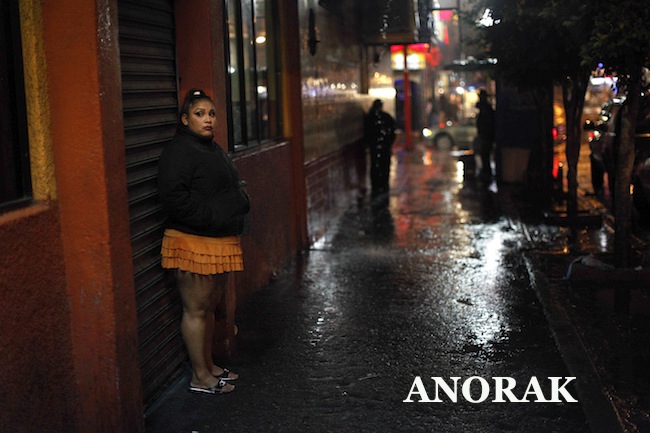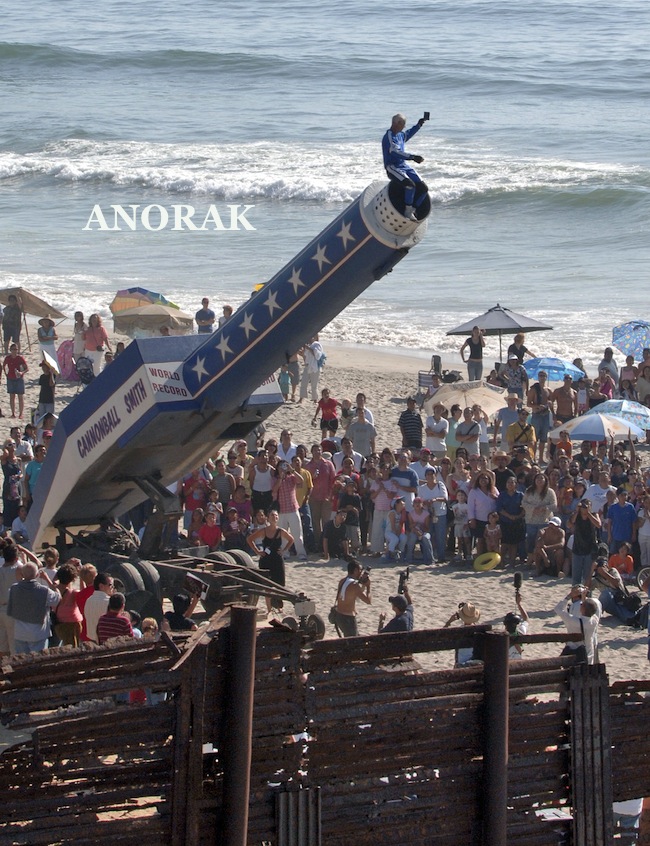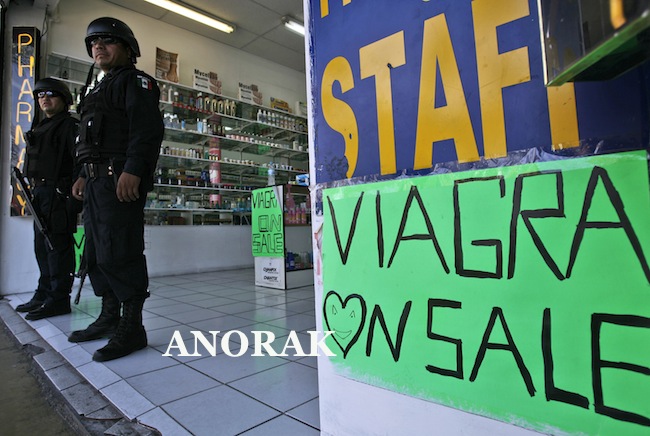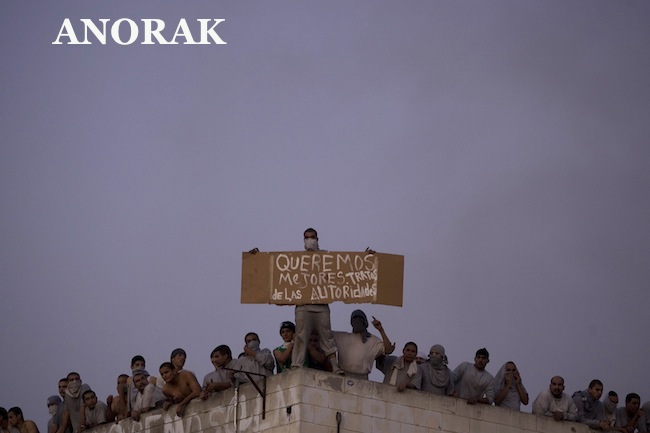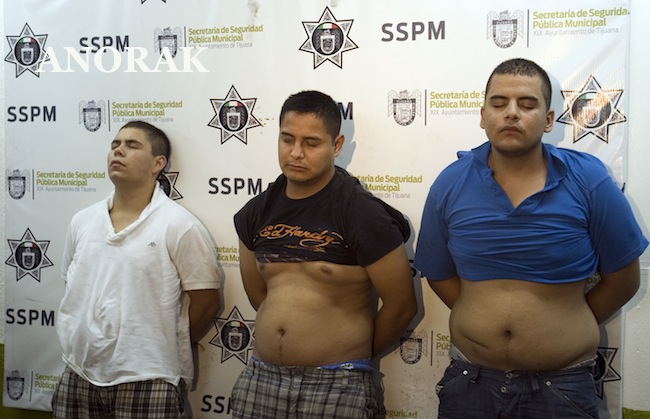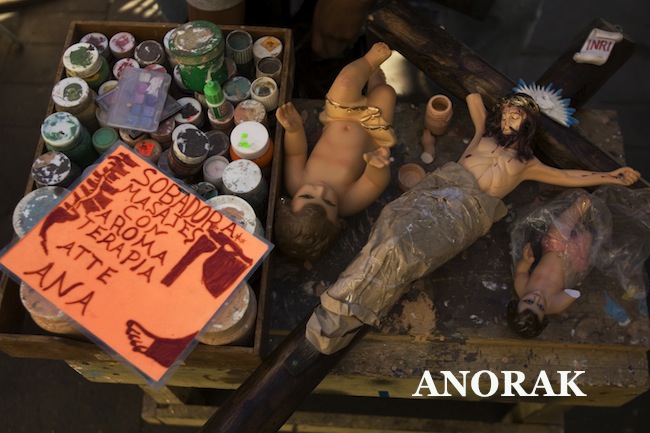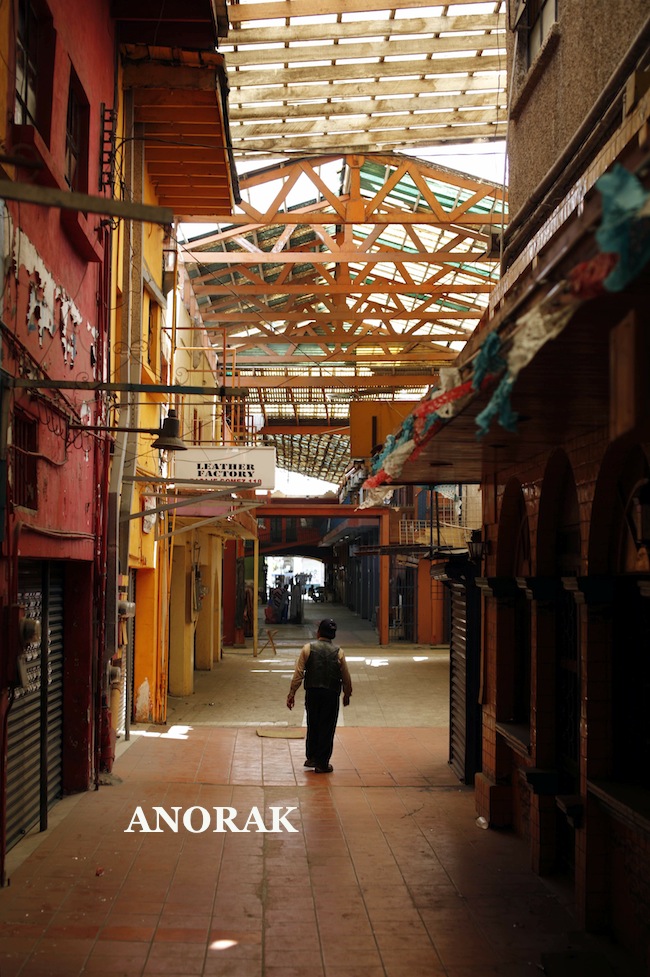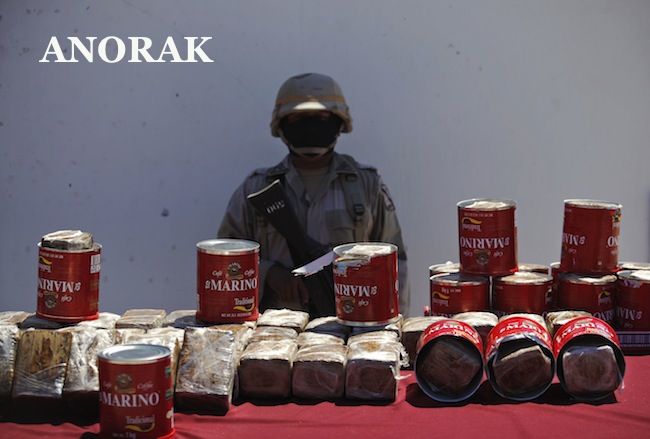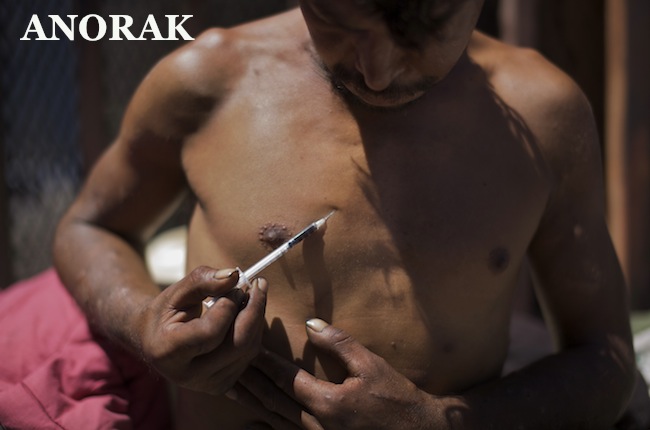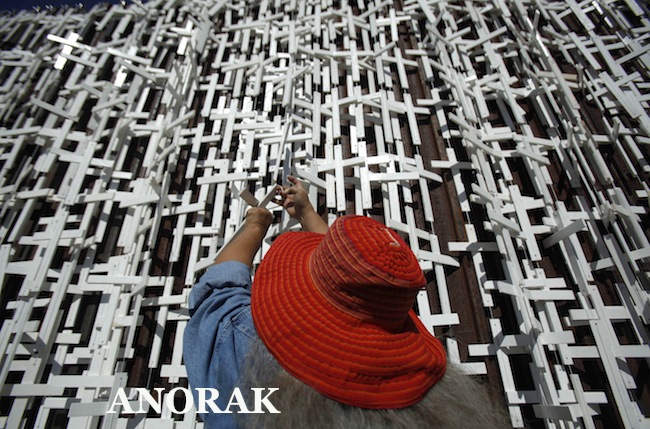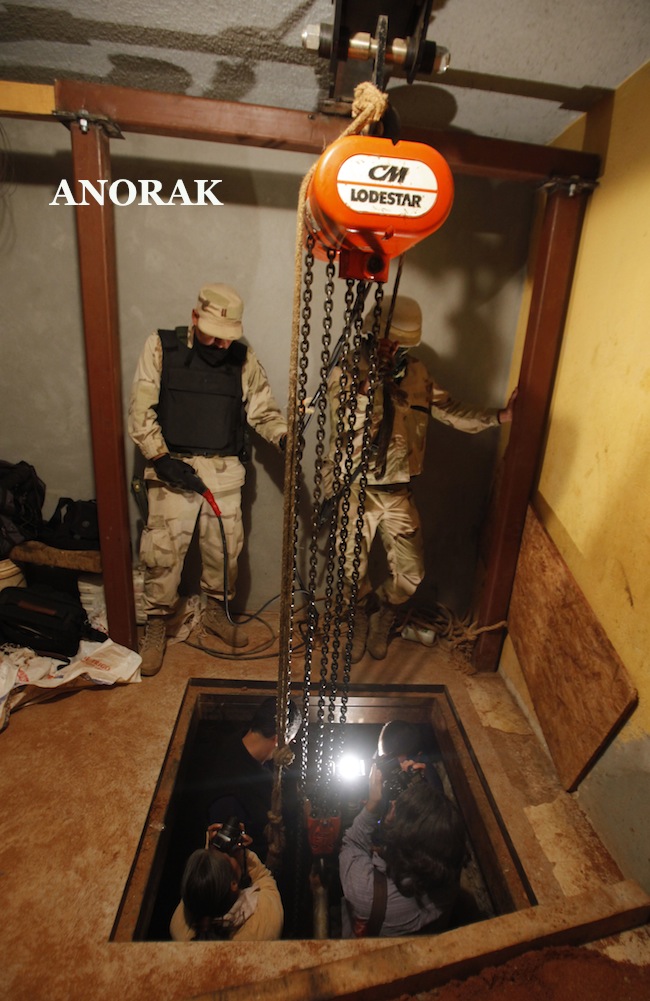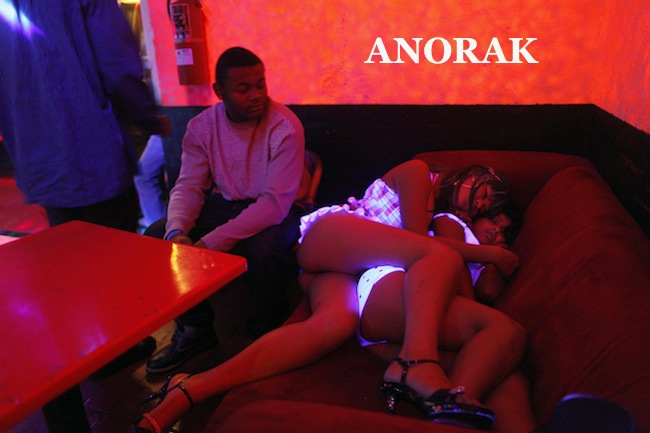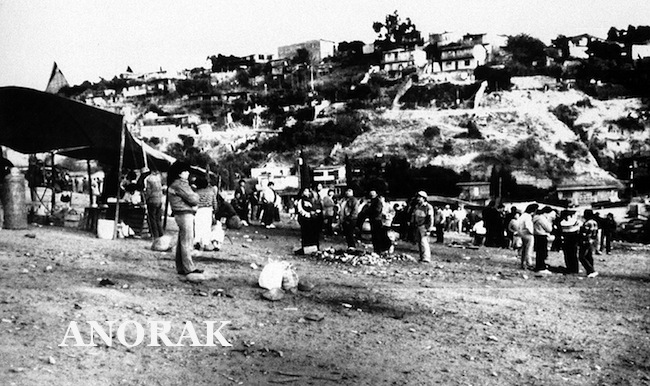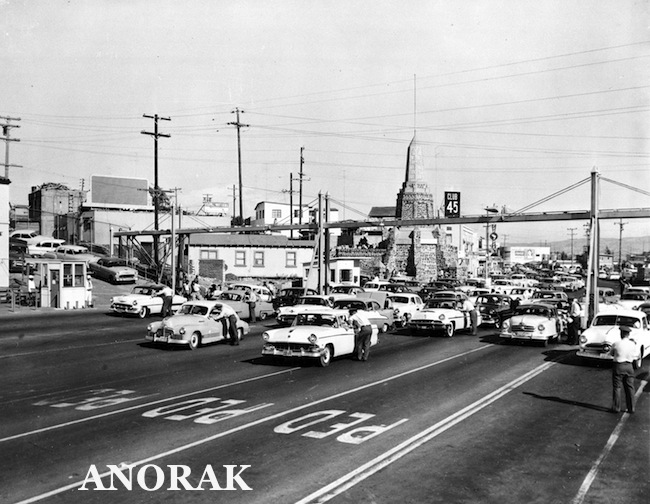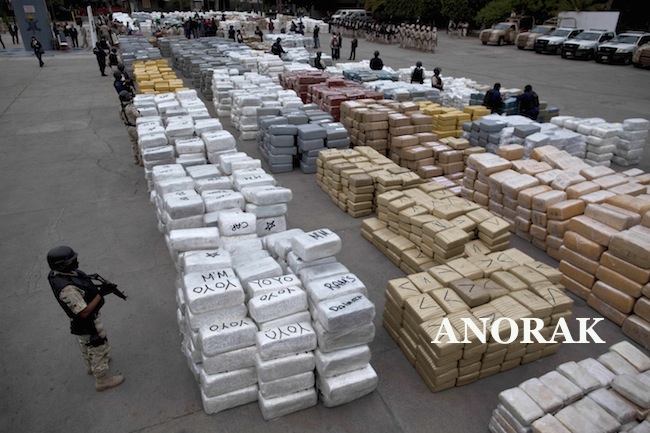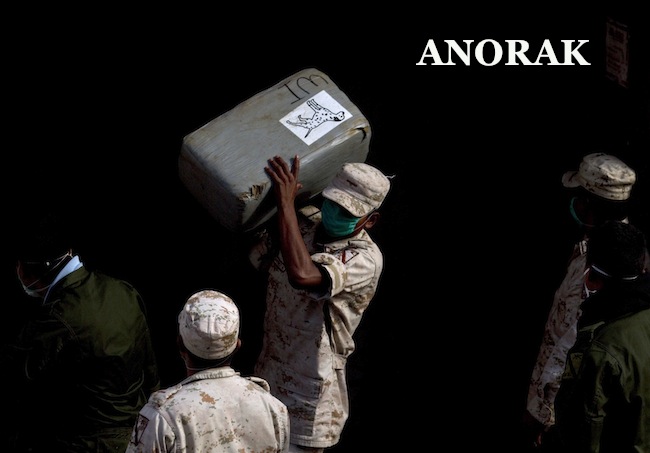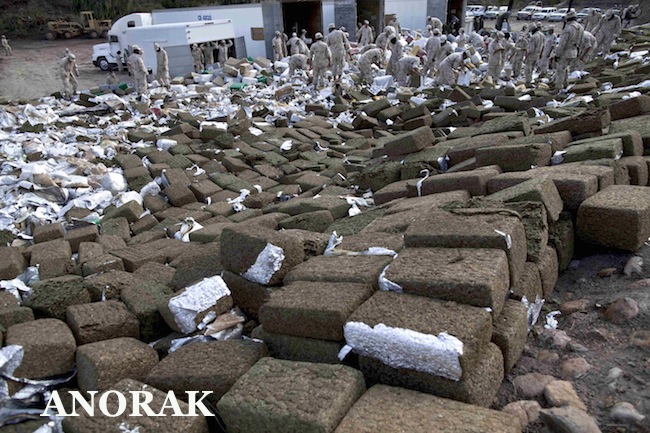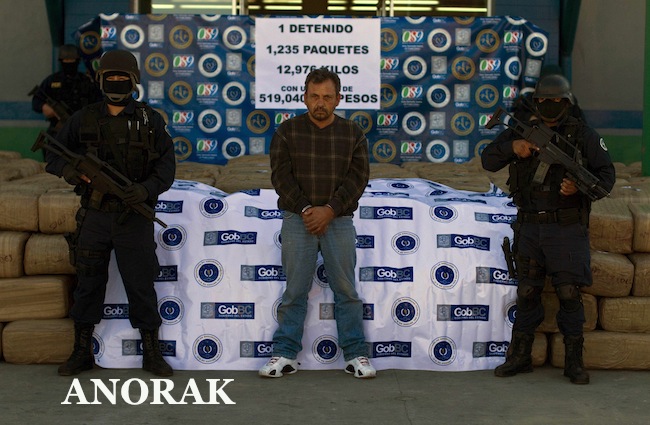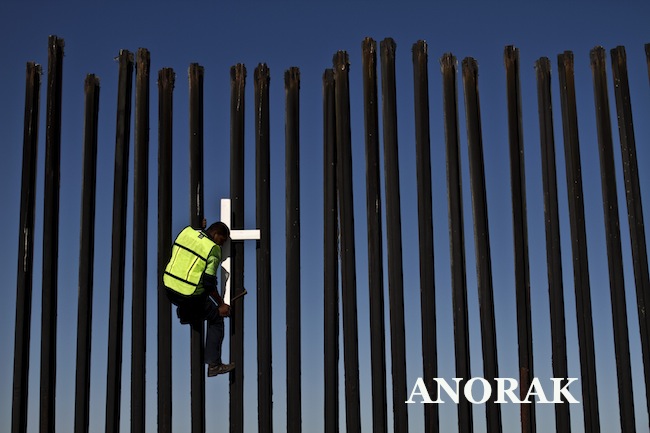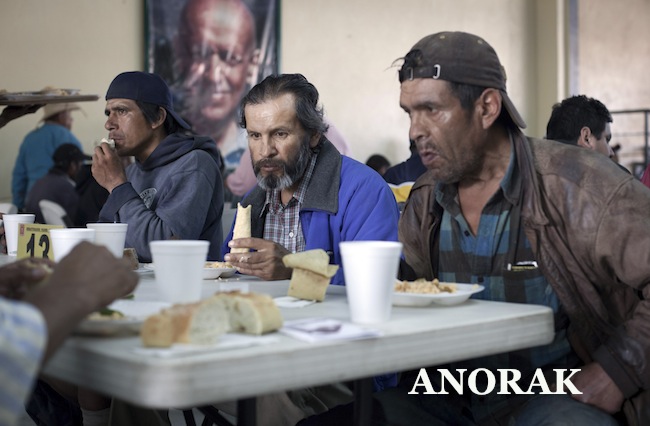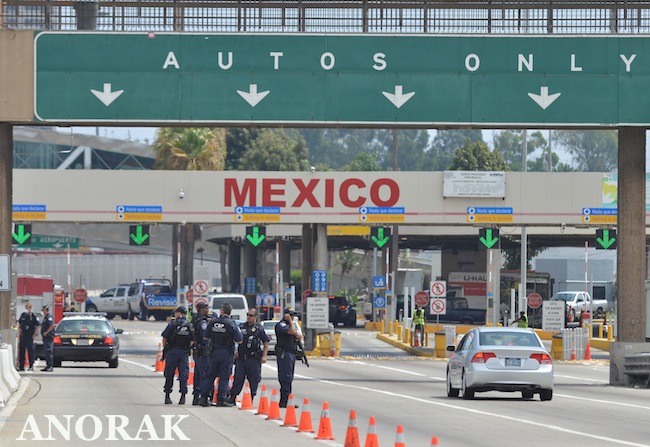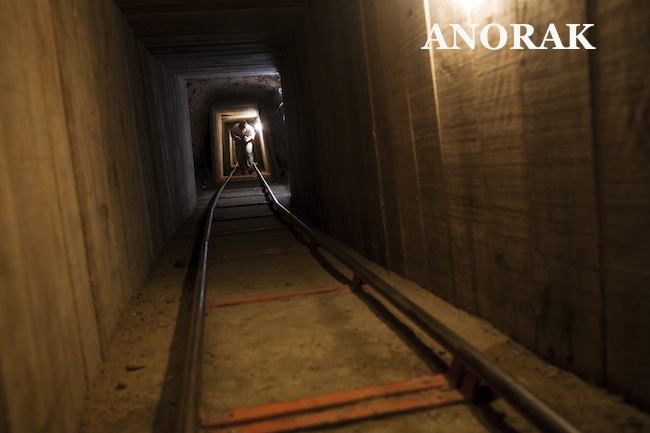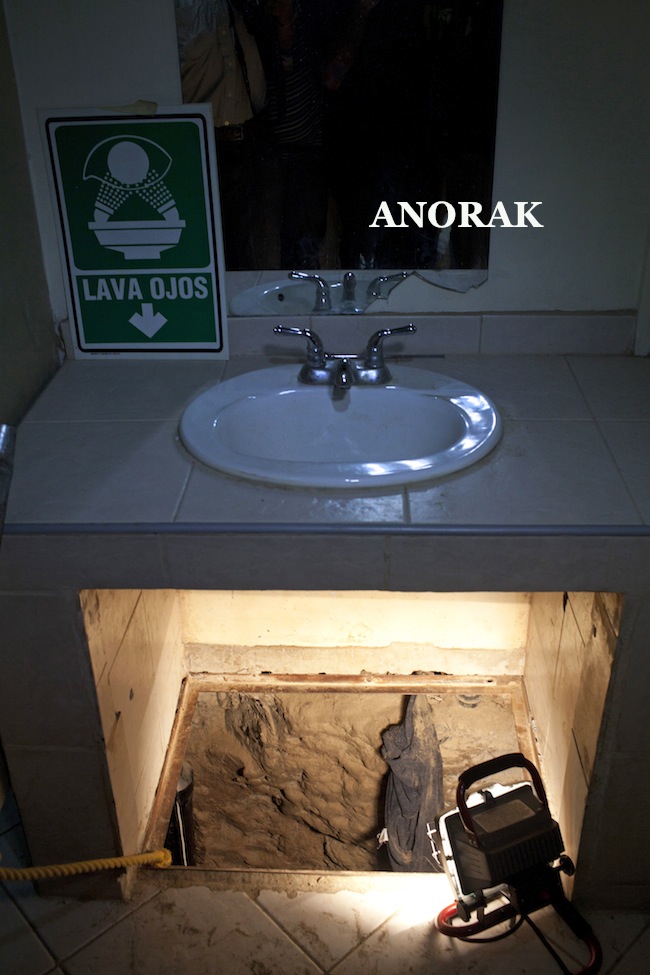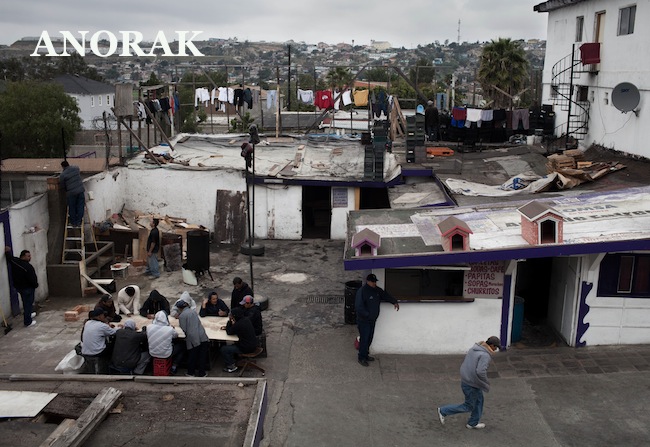Pictures of Life in Tijuana, Mexico: sex, drugs, hope and murder
LIFE in Tijuana, Mexico, can be hard. Sex, drugs and life comes cheap:
A sex worker waits for customers at a street in downtown Tijuana, northern Mexico, Sunday, Dec. 13, 2009.
Saul Arellano, 8, touches his mother’s arm while she answers questions after they were reunited in Tijuana, Mexico. His mother, Elvira Arellano, is a Mexican citizen that sought refuge in a Chicago church and was finally deported by the United States.
Dave “Human Cannonball” Smith holds up his passport before being shot out of a cannon over the U.S.-Mexico border fence from the Playas de Tijuana area of Tijuana, Mexico to Border Field State Park in San Diego Saturday, Aug. 27, 2005 in San Diego. The stunt was part of the Insite ’05 border art exhibit. The work titled “One Flew Over the Void” is by Venezuelan artist Javier Tellez.
Federal police officers stand on guard in front of a pharmacy in Tijuana, Mexico, Tuesday, Aug. 12, 2008. Federal inspectors have raided 15 pharmacies in downtown Tijuana in a search for counterfeit drugs and illegal sales practices in stores known for offering U.S. tourists easy access to discount drugs.
Inmates gather on the roof of a building and hold up a sign that reads in Spanish “We want better treatment by the authorities” as they riot at La Mesa state penitentiary in Tijuana, Mexico, Sunday, Sept. 14, 2008.
Three murder suspects stand with their eyes closed as they are shown to the press at a police station in Tijuana, Mexico, Wednesday, Oct. 1, 2008.
A sign offering the services of a masseuse or “sobadora” lies on a table used to repair religious figures in Tijuana, Mexico, Saturday, Jan. 10, 2009. The “sobadores” are traditional chiropractor with no formal training, who use a mix of massage and faith to cure everything from sore backs to bad knees. Most of their clients are Mexican laborers in the U.S. who can’t afford formal physical therapy or simply don’t trust U.S. doctors
A man walks through an empty Pasaje Gomez, a commercial corridor in Tijuana, Mexico, Friday, May 15, 2009. Four US citizens were found stabbed and strangled last Saturday in this border city, the latest deaths amid Mexico’s drug war and another blow to a tourist-based economy struggling from swine flu and the global economic recession.
A soldier stands by seized marijuana found packed in coffee cans at a presentation to the press in Tijuana, Mexico, Wednesday, Aug. 5, 2009. Mexican army officials announced the seizure of 127 cans of coffee filled with marijuana at Tijuana’s international airport.
Victor Moreno, 40, a drug addict with a 20 year-old habit, draws blood from his chest to mix it with his fix of heroin at a street corner near the international border in Tijuana, Mexico, Tuesday, Aug. 25, 2009. Mexico now has some of the most liberal laws in the world for drug users after eliminating jail time for tiny amounts of marijuana, cocaine and even heroin, LSD and methamphetamine.
The body of an unidentified man hangs from his neck under a bridge on the old Rosarito highway as authorities stand by in Tijuana, Mexico, Friday, Oct. 9, 2009. Authorities found the dead man beaten, naked and castrated.
Leticia Jimenez hangs crosses on the U.S.-Mexico border wall as part of Day of the Dead celebrations in Tijuana, Mexico, Friday, Oct. 30, 2009. Volunteers from the Pro-migrant Defense Coalition hung 5,100 wooden crosses in honor of 5,100 migrants who have died crossing to the US since 1995, according to their statistics.
Soldiers use an elevator to descend journalists to a 9 meters deep (29 feet), 122 meters long (400 ft) tunnel found by the Army inside a house near the US-Mexico border in Tijuana, Mexico, Saturday, Nov. 7, 2009.
A client, left, looks at sex workers sleeping in a night club in downtown Tijuana in northern Mexico, Saturday, Dec. 12, 2009.
A police officer exits a night club where a man was shot in Tijuana, Mexico, Tuesday, March 30, 2010. According to the police at the crime scene, a man was shot inside the club and died en route to the hospital.
Hundreds of Mexican nationals wait at a soccer field for dusk to cross the border into California, August 18, 1987, Tijuana, Mexico.
United States customs inspectors at the San Diego, Calif., border station check automobiles returning from Tijuana, Mexico, November 11, 1958.
Soldiers and police officers guard packages of seized marijuana during a presentation for the media in Tijuana, Mexico, Monday, Oct. 18, 2010. On a conjoined operation with the army, local and state police seized 105 tons of U.S.-bound marijuana Monday, by far the biggest drug bust in the country in recent years. Eleven suspects were detained.
A soldier carries a package of seized marijuana prior to its incineration in Tijuana, Mexico, Wednesday, Oct. 20, 2010.
Soldiers work on packages of seized marijuana prior to incinerating them in Tijuana, Mexico
A soldier guards next to packages of marijuana that are being incinerated in Tijuana, Mexico
Suspect Manuel Mercado, center, stands handcuffed and guarded by police in front of packages of marijuana allegedly seized from him as he is presented to the press at the Baja California state police headquarters in Tijuana, Mexico, Monday Nov. 1, 2010. According to state police, 12,976 kilograms (28,606 pounds) of marijuana were seized in an operation early Monday.
A deported migrant climbs the U.S.- Mexico border fence as he prepares for the 6th annual Marcha Migrante, or Migrant March, in Tijuana
n this photo taken June 24, 2011, homeless men that live in the canals of the Tijuana River eat a meal at the soup kitchen of Father Chava in Tijuana, Mexico. During the day, deportees who find themselves in Tijuana look for work and flee Mexican police, who will jail them for not having papers, just like in the U.S. At night they take refuge in the canals, beneath bridges or in shacks, among drug addicts and people with mental health problems; a few feet from the rusty barrier that separates the country of their birth from the country where they worked years for a better life.
U.S. Customs and Border Protection agents stand in southbound lanes next to a construction site where a scaffolding collapsed at the San Ysidro Port of Entry in San Diego Wednesday, Sept. 14, 2011. Three people have been taken to hospitals after construction scaffolding collapsed on cars at the nation’s busiest border crossing connecting San Diego and Tijuana, Mexico.
A news photographer walks inside a tunnel in the northern border city of Tijuana, Mexico Wednesday Nov. 30, 2011. A day earlier, the tunnel was discovered by U.S. authorities in San Diego’s Otay Mesa area, the latest in a spate of secret passages found to smuggle drugs from Mexico. This tunnel is a 400-yard (meter) passage linking warehouses in San Diego and Tijuana and is equipped with lighting and ventilation.
The entrance to a cross border illegal tunnel is lit by a lamp after it was found underneath a bathroom sink by the Mexican army inside a warehouse in Tijuana, Mexico, Thursday July 12, 2012. The 220-yard tunnel, presumably designed to smuggle drugs into the United States, was incomplete and had not yet crossed the border into San Diego.
In this March 6, 2012 photo, people sit at a table as they separate beans for a meal at the CIRAD drug rehabilitation center in Tijuana, Mexico. In a relatively new phenomenon, young people are increasingly being used as “mules,” or distributors for drug traffickers, whether to cross drugs into the U.S. or to sell, especially along the border, according to Victor Clark, a social anthropologist and specialist on drug trafficking in this region. The drug rehab center houses about 500 addicts, and about 100 of them are minors.
A sexual worker stands next to her pimp outside a night club during daytime in Tijuana, northern Mexico, Dec. 9, 2009.
Posted: 18th, September 2012 | In: Key Posts, Reviews Comments (3) | TrackBack | Permalink


